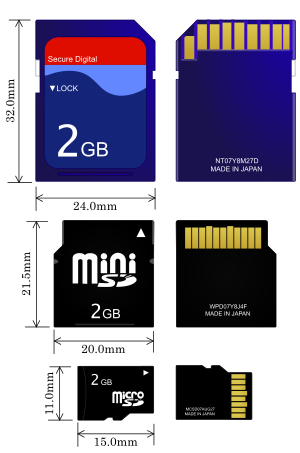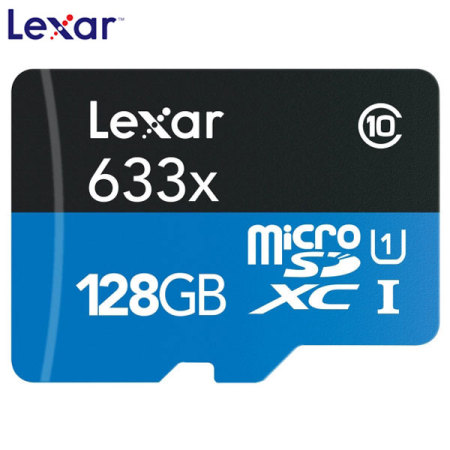 In this guide, we’ll break down everything you need to know about Secure Digital (SD) memory cards for your smartphone, tablet or camera. Let’s go!
In this guide, we’ll break down everything you need to know about Secure Digital (SD) memory cards for your smartphone, tablet or camera. Let’s go!
Form factor: SD vs Micro SD
There are two major form factors when it comes to memory cards: SD and micro SD. SD cards are generally used in larger devices, like cameras and video cameras; and are a little bit larger than a postage stamp. Meanwhile, Micro SD cards tend to be used in smartphones, tablets and other portable gadgets. They are much smaller than full-size SD cards, about the size of a fingernail.
There’s also a third form factor, Mini SD, but this was largely a transitional form factor used in the mid 2000s before Micro SD became popular. It is rarely seen today.
Families: SD vs SDHC vs SDXC
There are also different families or generations of SD cards: the first generation SD, the second generation SDHC, and the third general SDXC. In general, each new generation brought increased speeds and capacities, allowing faster and larger cards to be made.
The different families also use different filesystems – SDHC cards came with FAT32, and SDXC cards use the exFAT filesystem. Both FAT32 and exFAT are supported by recent versions of Windows and Mac, although Linux distributions often support only FAT32 for legal reasons.
Speed: Class 6 vs Class 10 vs U1 vs U3
Each SD or Micro SD card has a speed rating, called a class. Larger class numbers correspond to a faster level of minimum performance, allowing files to be copied or recorded at a higher speed.
The class rating system is actually quite simple to remember: the number after each Class corresponds to the minimum sequential read speeds, in MB/s. So Class 2 is 2MB/s, Class 6 is 6MB/s, etc. For example, Class 2 is sufficient for SD video recording, while 4 and 6 support HD recording. Class rating is shown on the card with a number inside a circle.
 After Class 10, it gets a bit more complicated. An additional standard called UHS was introduced, which allows cards to reach higher speeds. Here we see a similar system – UHS Class 1 (or just U1), which corresponds to a minimum performance rating of 10MB/s, while UHS Class 3 corresponds to a performance rating of 30MB/s. UHS Class 3 supports 4K video recording. UHS speed classes are shown on the card with a number inside a U.
After Class 10, it gets a bit more complicated. An additional standard called UHS was introduced, which allows cards to reach higher speeds. Here we see a similar system – UHS Class 1 (or just U1), which corresponds to a minimum performance rating of 10MB/s, while UHS Class 3 corresponds to a performance rating of 30MB/s. UHS Class 3 supports 4K video recording. UHS speed classes are shown on the card with a number inside a U.
Confusingly, U1 and Class 10 refer to the same 10MB/s speed standard, so sometimes you’ll see cards that are labelled both as Class 10 and UHS-1.
Compatibility
Generally, host devices (e.g. cameras, mobile phones and card readers) work with older SD cards, but newer SD cards may not work in older devices. For example, the host device might not be able to read the full size of the card, read the file system of the card or just have a wrong hardware interface. Wikipedia has a nice list of factors and a table of compatibility, if you’d like more details.
Fairly obviously, form factors also impact compatibility. Full-size SD cards and Micro SD cards will not work in host devices designed for one another, although smaller cards can fit into larger card slots via adapters (see the section below).
Additionally, some older devices don’t support the UHS-1 standard, which may result in slower-than-expected performance when using U1 or U3 cards.
For these reasons, it’s important to search for manufacturer specifications for your device before buying an SD or Micro SD card. Usually, Googling for the name of your device plus “largest SD card” will work.
 Adapters
Adapters
Mini and Micro SD cards can be placed inside passive adapters, allowing them to be used in ports designed for larger form factors. Most commonly, Micro SD cards can be placed inside SD adapters. This is useful for using a single card in multiple devices (such as a phone and a digital camera), as well as using Micro SD cards in SD card readers (like those on laptops and desktop PCs).
Conclusion
We hope that this guide was useful. If you have any unanswered questions – or you just want to let us know that it helped – please get in touch via the comments below! You can also reach us on Twitter @mobilefun!
First image credit: Wikipedia.